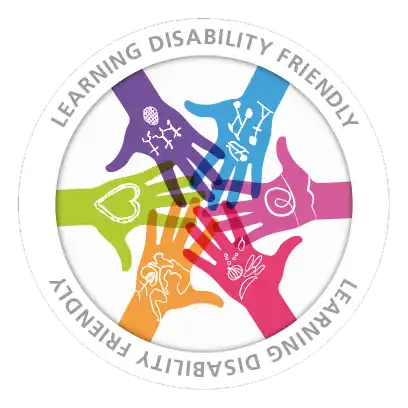Chaperones & Interpreters
If you would like us to arrange for a trained chaperone to accompany you during your examination or treatment, please inform a member of the reception staff or you may prefer to ask a friend, spouse or relative to accompany you for your appointment.

Interpreting and Translation
The practice uses Language Line, a local interpreting and translation service which can provide face to face and telephone interpreting for most Asian, European and Middle Eastern languages. Please inform the receptionist in advance if you need this service. A booking will then be made on your behalf.
Chaperone Policy
Introduction
St Mary’s Surgery is committed to providing a safe, comfortable environment where the safety of patients and staff is of paramount importance. Patients experiencing consultations, examinations and investigations need to feel and be safe and to experience as little discomfort and distress as possible. Equally health professionals are at a potential risk of their actions being misconstrued or misrepresented if they conduct examinations where no third party is present. Clinicians have a professional responsibility to minimise the risk of false accusations of inappropriate behaviour.
This policy presents principles and outlines the procedures that should be in place for appropriate use of chaperones for patients during examinations, investigations and care.
Guidelines
Clinicians (male and female) should consider whether an intimate or personal examination of the patient (either male or female) is justified, or whether the nature of the consultation poses a risk of misunderstanding.
- The clinician should give the patient a clear explanation of what the examination will involve; explain to the patient why an examination is necessary and give the patient an opportunity to ask questions
- Always adopt a professional and considerate manner - be careful with humour as a way of relaxing a nervous situation as it can easily be misinterpreted.
- Always ensure that the patient is provided with adequate privacy to undress and dress and keep them covered as much as possible to maintain their dignity; do not help the patient to remove clothing unless they have asked you to, or you have checked with them that they want you to help.
- Ensure that a suitable sign is clearly on display in each consulting or treatment room offering the chaperone service if required.
- If dealing with a child or young person you must assess their capacity to consent to the examination. If they lack the capacity to consent, you should seek their parent’s consent
This should remove the potential for misunderstanding. However, there will still be times when either the clinician, or the patient, feels uncomfortable, and it would be appropriate to consider using a chaperone. Patients who request a chaperone should never be examined without a chaperone being present. If necessary, where a chaperone is not available, the consultation/examination should be rearranged for a mutually convenient time when a chaperone can be present.
There may be rare occasions when a chaperone is needed for a home visit. The following procedure should still be followed.
Chaperones
When you carry out an intimate examination, you should offer the patient the option of having an impartial observer (a chaperone) present wherever possible. This applies whether or not you are the same gender as the patient.
A chaperone should usually be a health professional and you must be satisfied that the chaperone will:
- be sensitive and respect the patient’s dignity and confidentiality
- reassure the patient if they show signs of distress or discomfort
- be familiar with the procedures involved in a routine intimate examination
- stay for the whole examination and be able to see what the doctor is doing, if practical
- be prepared to raise concerns if they are concerned about the doctor’s behaviour or actions.
A relative or friend of the patient is not an impartial observer and so would not usually be a suitable chaperone, but you should comply with a reasonable request to have such a person present as well as a chaperone.
If either you or the patient does not want the examination to go ahead without a chaperone present, or if either of you is uncomfortable with the choice of chaperone, you may offer to delay the examination to a later date when a suitable chaperone will be available, as long as the delay would not adversely affect the patient’s health.
If you don’t want to go ahead without a chaperone present but the patient has said no to having one, you must explain clearly why you want a chaperone present. Ultimately the patient’s clinical needs must take precedence. You may wish to consider referring the patient to a colleague who would be willing to examine them without a chaperone, as long as a delay would not adversely affect the patient’s health.
You should record any discussion about chaperones and the outcome in the patient’s medical record. If a chaperone is present, you should record that fact and make a note of their identity. If the patient does not want a chaperone, you should record that the offer was made and declined.
Confidentiality
- The chaperone should only be present for the examination itself, and most discussion with the patient should take place while the chaperone is not present.
- Patients should be reassured that all practice staff understand their responsibility not to divulge confidential information.
Procedure
- The clinician will contact reception to request a chaperone.
- Where no chaperone is available, a clinician may offer to delay the examination to a date when one will be available, as long as the delay would not have an adverse effect on the patient’s health.
- If a clinician wishes to conduct an examination with a chaperone present but the patient does not agree to this, the clinician must clearly explain why they want a chaperone to be present. The clinician may choose to consider referring the patient to a colleague who would be willing to examine them without a chaperone, as long as the delay would not have an adverse effect on the patient’s health.
- The clinician will record in the notes that the chaperone is present, and identify the chaperone.
- The chaperone will enter the room discreetly and remain in the room until the clinician has finished the examination.
- The chaperone will normally attend inside the curtain at the head of the examination couch and observe the procedure.
- During the examination the clinician should:
- explain what you are going to do before you do it and, if this differs from what you have told the patient before, explain why and seek the patient’s permission
- stop the examination if the patient asks you to
- keep discussion relevant and don’t make unnecessary personal comments.
- To prevent embarrassment, the chaperone should not enter into conversation with the patient or GP unless requested to do so, or make any mention of the consultation afterwards.
- The patient can refuse a chaperone, and if so this must be recorded in the patient’s medical record.
Key points to remember
- Record the use, offer and declining of a chaperone in the patient’s notes.
- GPs do not have to undertake an examination if a chaperone is declined, providing a delay will not adversely affect the patient’s health.
- Be sensitive to a patient’s ethnic/religious and cultural background. The patient may have a cultural dislike to being touched by a man or woman or undressing.
- Do not proceed with an examination if you feel the patient has not understood due to a language barrier.
Date Reviewed: 1st September 2015
Date of next review: 1st September 2017
We use cookies to help provide you with the best possible online experience.
By using this site, you agree that we may store and access cookies on your device. Cookie policy.
Cookie settings.
Functional Cookies
Functional Cookies are enabled by default at all times so that we can save your preferences for cookie settings and ensure site works and delivers best experience.
3rd Party Cookies
This website uses Google Analytics to collect anonymous information such as the number of visitors to the site, and the most popular pages.
Keeping this cookie enabled helps us to improve our website.



